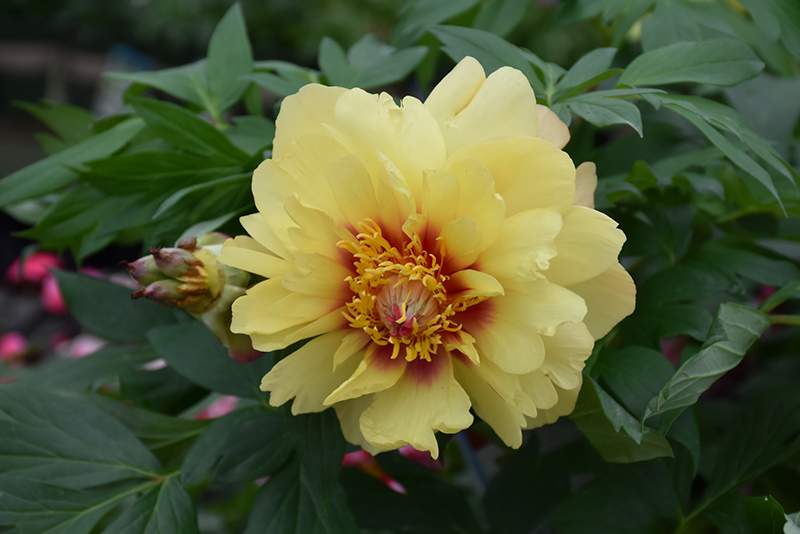>> Home
Height: 30 inches
Spacing: 26 inches
Sunlight:
![]()
![]()
Hardiness Zone: 3
Other Names: Itoh Peony
Group/Class: Itoh Hybrids
Description:
Large semi blooms up to eight inches across held on strong stems above luxurious finely cut foliage; flowers appear orange upon opening, then turn peachy yellow, once open they are yellow with a flush of pink with dark red central flares
Ornamental Features
Misaka Peony features bold lightly-scented semi-double peach flowers with yellow overtones and a dark red flare at the ends of the stems in mid spring. The flowers are excellent for cutting. Its compound leaves remain green in color throughout the season.
Landscape Attributes
Misaka Peony is an herbaceous perennial with a more or less rounded form. Its medium texture blends into the garden, but can always be balanced by a couple of finer or coarser plants for an effective composition.
This is a relatively low maintenance plant, and should be cut back in late fall in preparation for winter. It is a good choice for attracting bees and butterflies to your yard, but is not particularly attractive to deer who tend to leave it alone in favor of tastier treats. Gardeners should be aware of the following characteristic(s) that may warrant special consideration;
- Disease
Misaka Peony is recommended for the following landscape applications;
- Mass Planting
- General Garden Use
Planting & Growing
Misaka Peony will grow to be about 30 inches tall at maturity, with a spread of 30 inches. When grown in masses or used as a bedding plant, individual plants should be spaced approximately 26 inches apart. It grows at a slow rate, and under ideal conditions can be expected to live for approximately 20 years. As an herbaceous perennial, this plant will usually die back to the crown each winter, and will regrow from the base each spring. Be careful not to disturb the crown in late winter when it may not be readily seen!
This plant does best in full sun to partial shade. It does best in average to evenly moist conditions, but will not tolerate standing water. It may require supplemental watering during periods of drought or extended heat. It is not particular as to soil pH, but grows best in rich soils. It is somewhat tolerant of urban pollution. This particular variety is an interspecific hybrid. It can be propagated by division; however, as a cultivated variety, be aware that it may be subject to certain restrictions or prohibitions on propagation.

